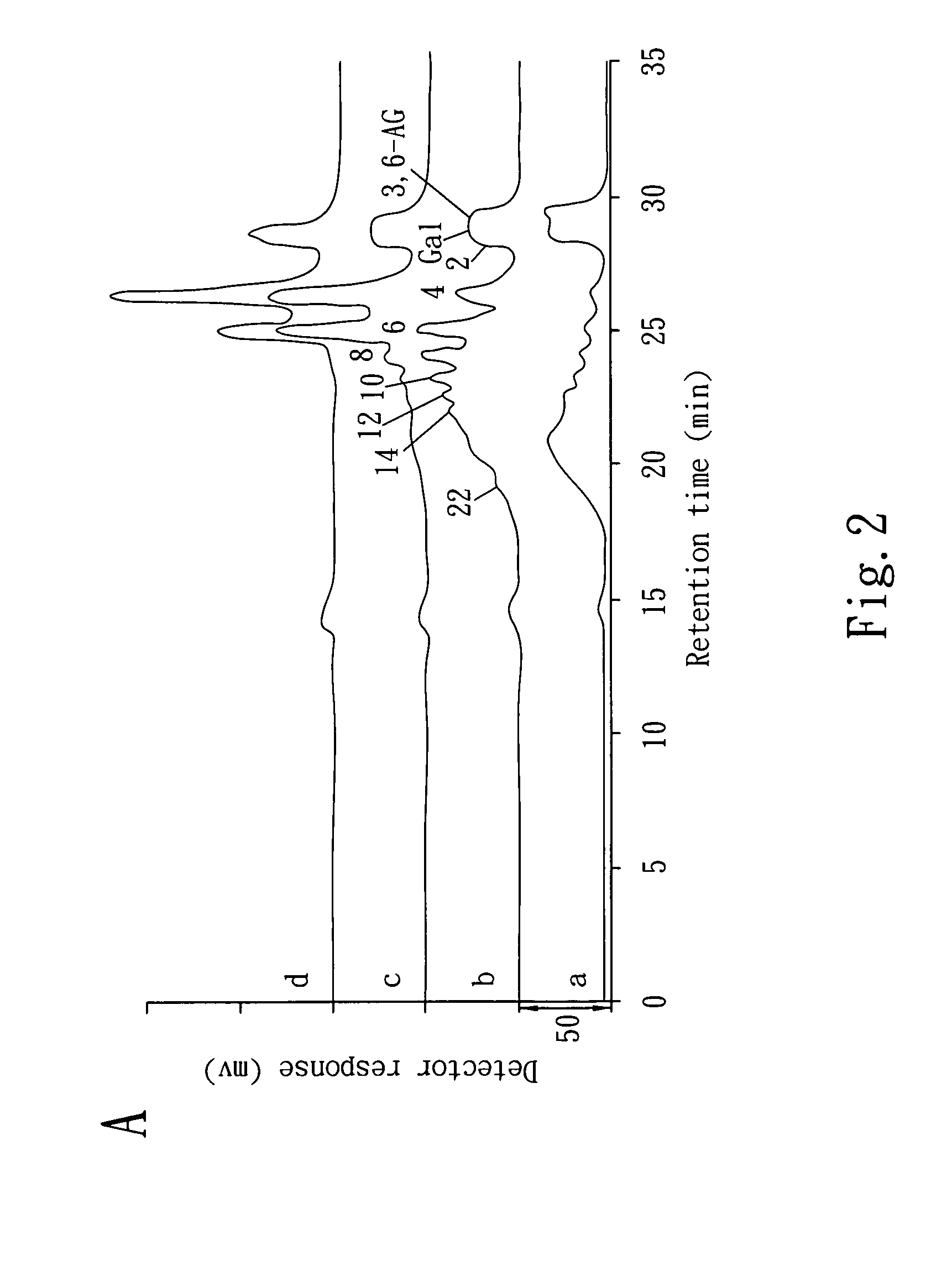Manufacturing method of separating and purifying neoagarooligosaccharides having degrees of polymerization from 2 to 22
a technology of oligosaccharides and purification methods, applied in the direction of fermentation, etc., can solve the problems of low efficiency of separating oligosaccharides from gracilaria /i>by using traditional methods, high cost of raw materials and product for obtaining extracted oligosaccharides, etc., to achieve mass production more quickly and efficiently, and reduce production costs
- Summary
- Abstract
- Description
- Claims
- Application Information
AI Technical Summary
Benefits of technology
Problems solved by technology
Method used
Image
Examples
Embodiment Construction
[0013]Since genome sequences of an Aeromonas salmonicida MAEF108 and a Pseudomonas vesicularis MA103 have been completed identified in the files, and it is confirmed that the related enzymes (such as agarase having 16 genes, alginate lyase having 5 genes, amylase having 20 genes, cellulase having 2 genes, xylanase having 7 genes) capable of hydrolyzing algal polysaccharides may exist in the crude enzyme solutions of the A. salmonicida MAEF108 and the P. vesicularis MA103, therefore, the present invention utilizes the superior hydrolysis property of the crude enzyme solutions of the two crude enzymes solutions produced by the A. salmonicida MAEF108 and the P. vesicularis MA103 to hydrolyze a low-priced and common agar polysaccharide extract, and the process of preparing the two special agarases contained crude enzyme solutions in accordance with the present invention is described as follows:
[0014](1) In the process of preparing the agarases contained crude enzyme solution produced by...
PUM
| Property | Measurement | Unit |
|---|---|---|
| temperature | aaaaa | aaaaa |
| temperature | aaaaa | aaaaa |
| pH | aaaaa | aaaaa |
Abstract
Description
Claims
Application Information
 Login to View More
Login to View More - R&D
- Intellectual Property
- Life Sciences
- Materials
- Tech Scout
- Unparalleled Data Quality
- Higher Quality Content
- 60% Fewer Hallucinations
Browse by: Latest US Patents, China's latest patents, Technical Efficacy Thesaurus, Application Domain, Technology Topic, Popular Technical Reports.
© 2025 PatSnap. All rights reserved.Legal|Privacy policy|Modern Slavery Act Transparency Statement|Sitemap|About US| Contact US: help@patsnap.com



